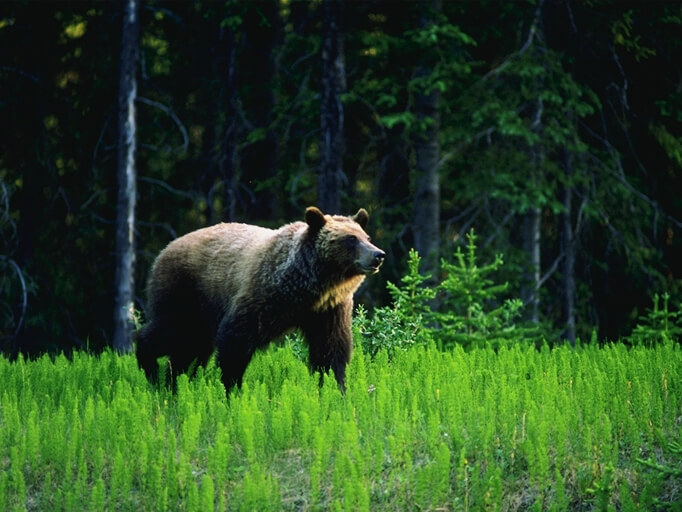
Abstract
We combine a recently developed framework for describing dietary generalism with compositional data analysis to examine patterns of omnivory in a large widely distributed mammal. Using the brown bear (Ursus arctos) as a model species, we collected and analyzed data from the literature to estimate the proportions of macronutrients (protein, carbohydrate, and lipid) in the diets of bear populations. Across their range, bears consumed a diversity of foods that resulted in annual population diets that varied in macronutrient proportions, suggesting a wide fundamental macronutrient niche. The variance matrix of pairwise macronutrient log-ratios indicated that the most variable macronutrient among diets was carbohydrate, while protein and lipid were more proportional or codependent (i.e., relatively more constant log-ratios). Populations that consumed anthropogenic foods, such agricultural crops and supplementary feed (e.g., corn), had a higher geometric mean proportion of carbohydrate, and lower proportion of protein, in annual diets. Seasonally, mean diets were lower in protein and higher in carbohydrate, during autumn compared to spring. Populations with anthropogenic subsidies, however, had higher mean proportions of carbohydrate and lower protein, across seasons compared to populations with natural diets. Proportions of macronutrients similar to those selected in experiments by captive brown bears, and which optimized primarily fat mass gain, were observed among hyperphagic prehibernation autumn diets. However, the majority of these were from populations consuming anthropogenic foods, while diets of natural populations were more variable and typically higher in protein. Some anthropogenic diets were close to the proportions selected by captive bears during summer. Our results suggest that omnivory in brown bears is a functional adaptation enabling them to occupy a diverse range of habitats and tolerate variation in the nutritional composition and availability of food resources. Furthermore, we show that populations consuming human-sourced foods have different dietary macronutrient proportions relative to populations with natural diets.
The full paper is available here.
Citation
Coogan, S. C. P., Raubenheimer, D., Stenhouse, G. B., Coops, N. C., & Nielsen, S. E. (2018). Functional macronutritional generalism in a large omnivore, the brown bear. Ecology and Evolution, 8(4), 2365–2376. doi:10.1002/ece3.3867






